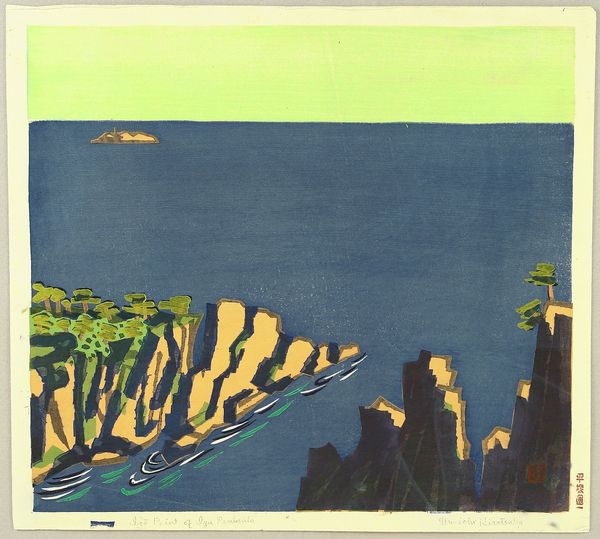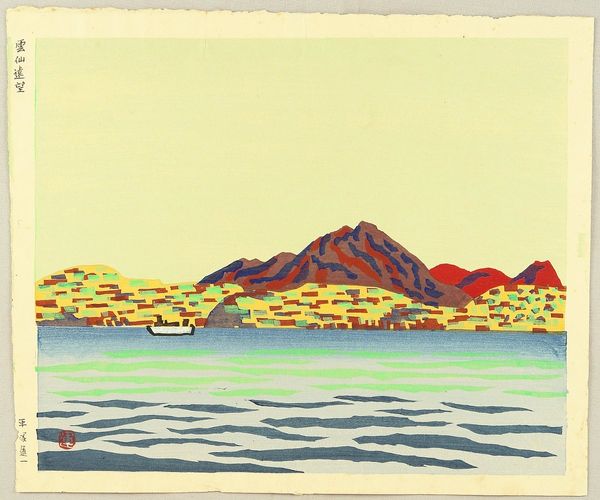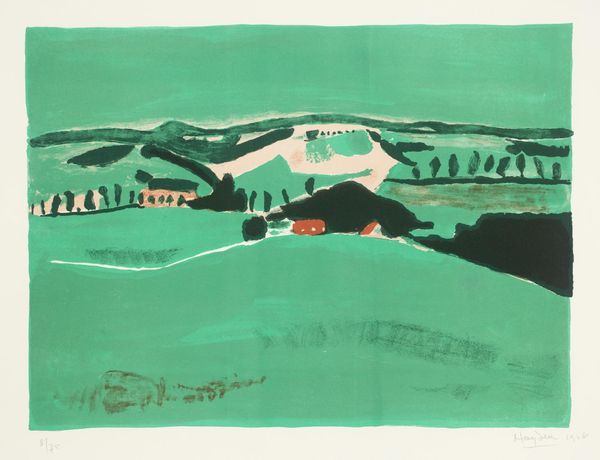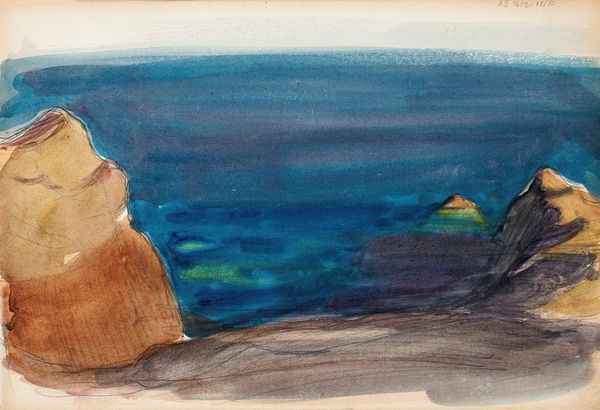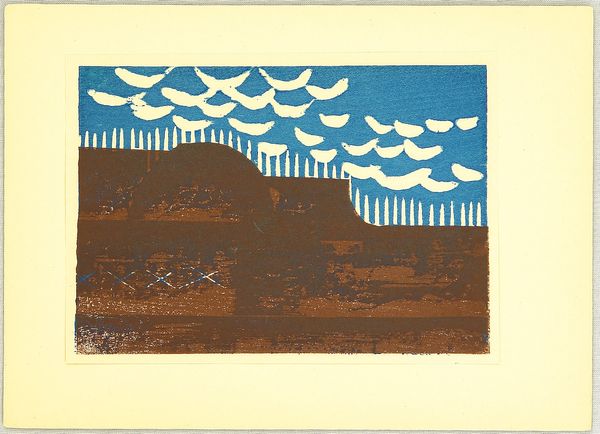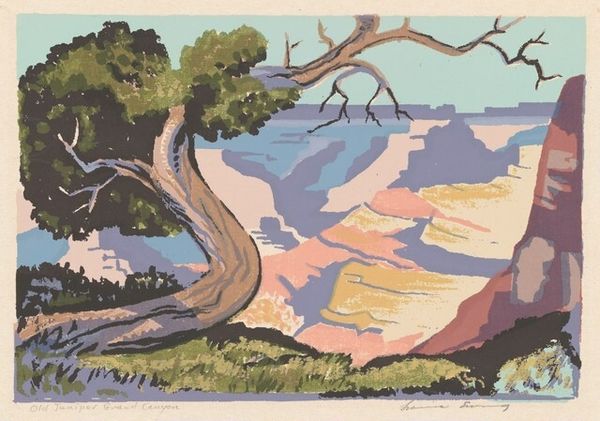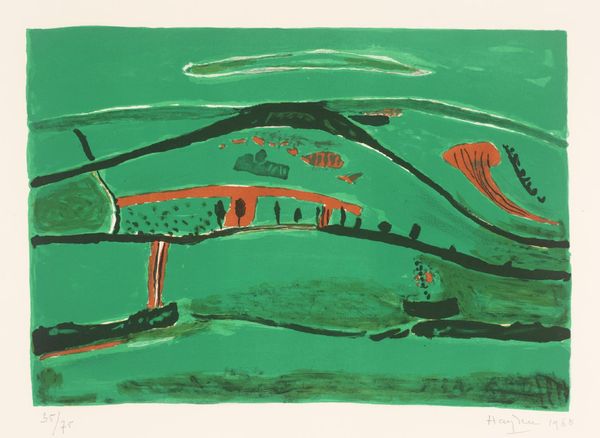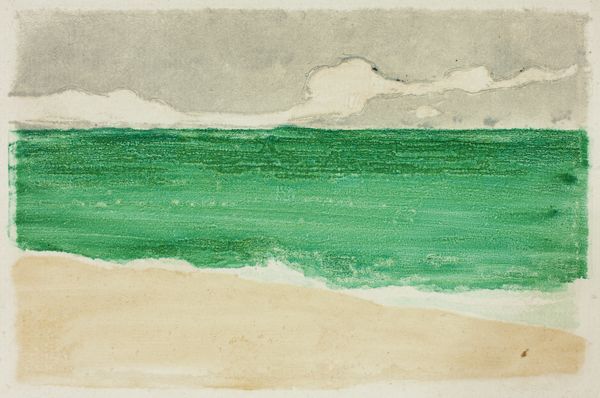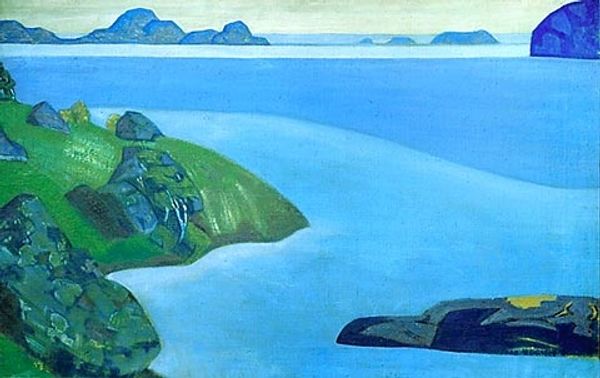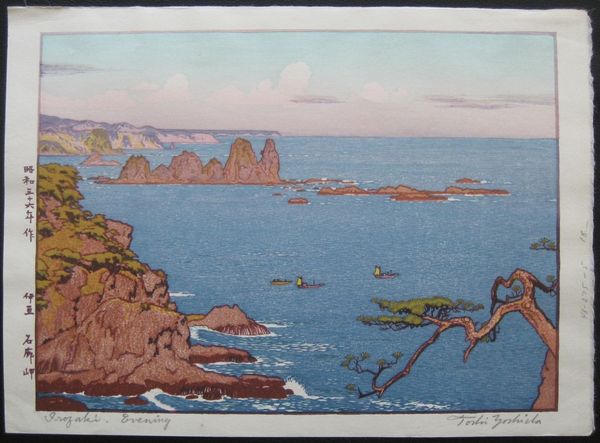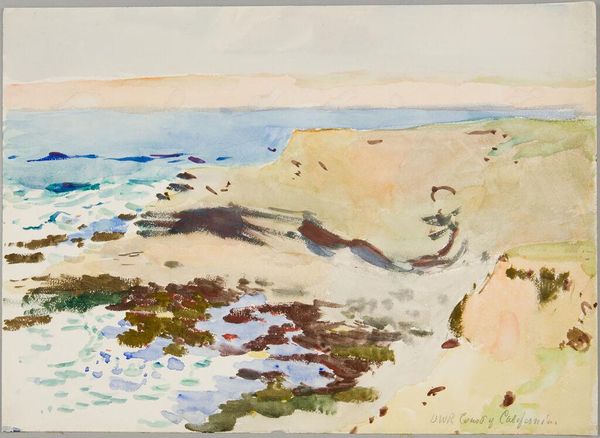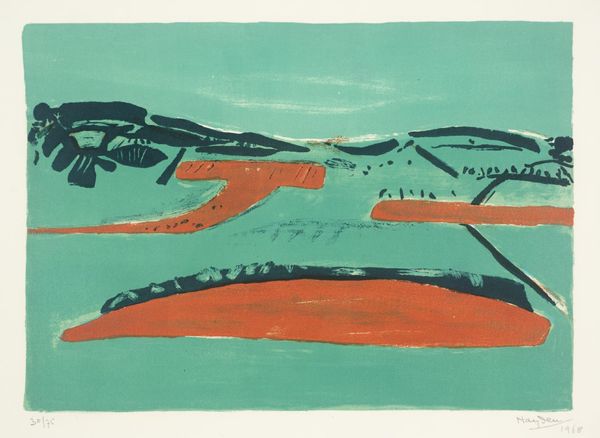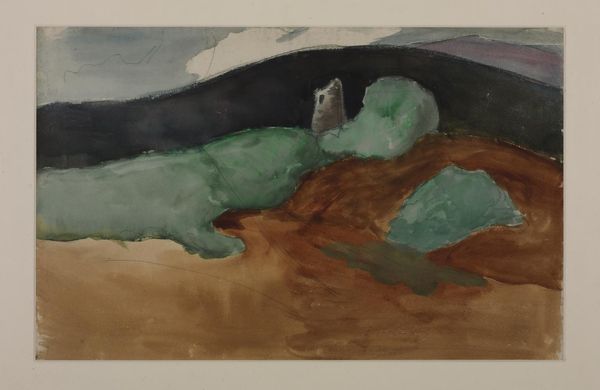
Copyright: Unichi Hiratsuka,Fair Use
Editor: Here we have Unichi Hiratsuka's "Cape Kasuga" from 1930, a woodblock print rendering of a coastal landscape. I'm immediately struck by the stillness of the scene; there's something quite peaceful about the muted tones and the simple composition. What's your read on this piece? Curator: Ah, yes, Hiratsuka. What I find interesting is how he uses a traditional medium like the woodblock print to capture a sense of modern serenity. There's this deliberate flattening of space, the near-absence of shadows… it almost feels like a memory being perfectly preserved, doesn’t it? A memory filtered through the artist's unique sensibilities. It's not just a landscape; it's a feeling-scape. Editor: A feeling-scape...I like that! The stylized clouds especially contribute to that dreamy quality. Was Hiratsuka part of a particular art movement at the time? Curator: He was a key figure in the *Sosaku-hanga* movement, the creative print movement. They really emphasized the artist's complete control over the entire process – design, carving, printing – as opposed to the traditional *ukiyo-e* collaborative system. Editor: So, it's a rejection of the commercial aspect of printmaking, almost a return to a more individualistic artistic approach? Curator: Precisely! Each print becomes a unique expression of the artist’s vision. That's why you get this wonderfully personal quality. Do you think you see that individualistic touch reflected in how the pagoda is represented? It looks almost intentionally rudimentary... Editor: I see what you mean! Almost as if he simplified the scene to its bare essentials. I didn't pick that up on my first impression. Thanks for your insights, really helpful! Curator: My pleasure. Isn't it remarkable how a seemingly simple print can reveal such layers of meaning with just a bit of exploration? A reminder to keep our eyes – and our minds – open!
Comments
No comments
Be the first to comment and join the conversation on the ultimate creative platform.
